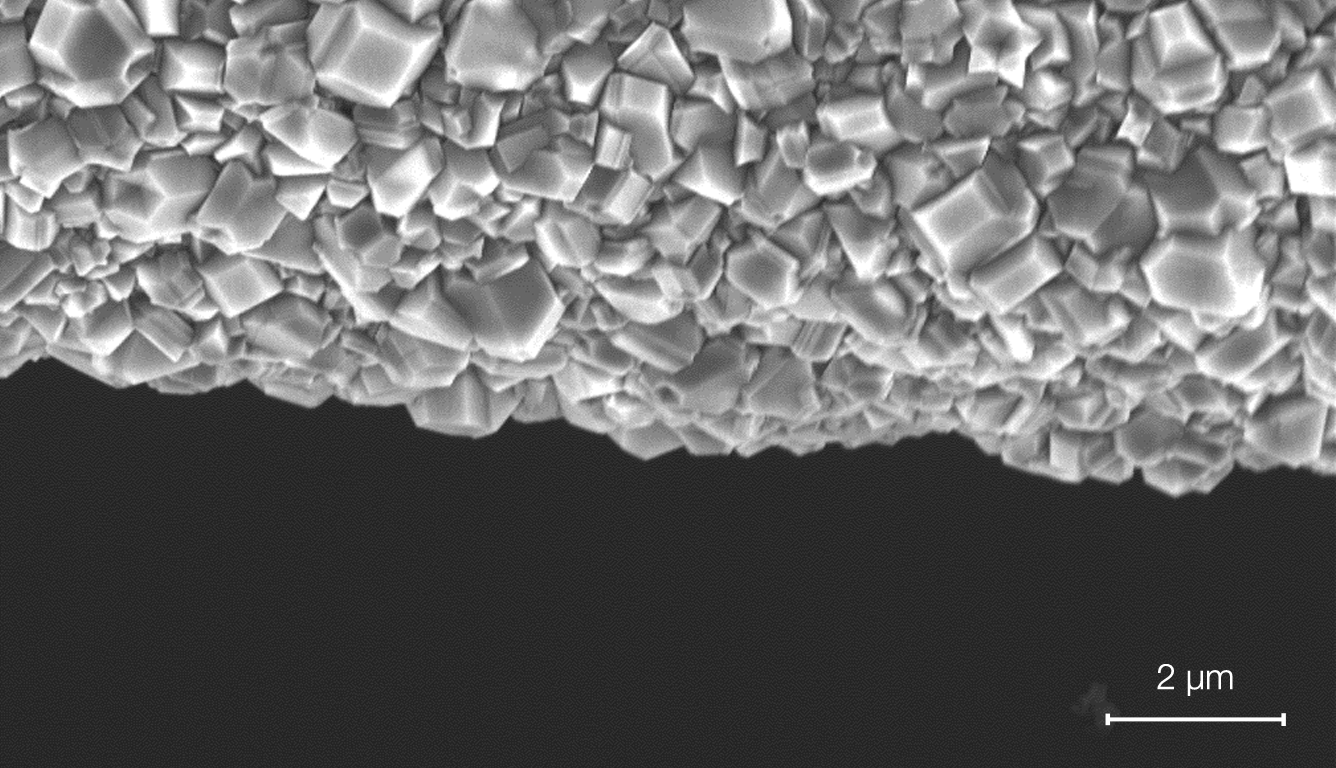Diamond coating Carbon Fibre
Carbon fibre is now wearing some flashy new jewellery, thanks to a team of Victorian scientists.
They’ve coated carbon fibre with diamond, enhancing the material’s usability in medical and sensor applications where the composite material offers huge potential advantages.
Microelectrodes are important in bioelectronic medicine for the treatment of a variety of debilitating conditions. They can often eliminate the need for drugs and, in the process, spare patients unwanted side effects. Treatable conditions include epilepsy, autoimmune and Parkinson’s disease and migraines.
Unfortunately, the materials currently used for fabrication of microelectrodes, such as noble metals or silicon, have a much higher density than human tissue, which is thought to produce scarring and reduce their long-term efficiency.
A team of researchers from CSIRO Manufacturing, Deakin University, Melbourne University and the Melbourne Centre for Nanofabrication (MCN), hope to solve this problem by combining two exceptional materials, carbon fibre and diamond that, used together, may possess the desired properties.
[perfectpullquote align="right" cite="" link="" color="#82bc43" class="" size="18"]“One of the best aspects of this project has been to work with such a stimulating group of interdisciplinary scientists and leaders in their fields,”
– Dr Kallista Sears.[/perfectpullquote]
Carbon fibre has been exciting medical circles due to its small diameter (<10μm) and ability to act as a light-weight, conductive filament; but in practice it typically has to be insulated in bulky glass capillaries in order to be useful. To try and solve this, the team began attempting to coat the fibres with microcrystalline diamond to form a thin, insulating and biocompatible sheath.
The difficulty is that growing diamond requires harsh conditions that can easily damage the carbon fibres. Through careful tuning of the diamond seeding – an early stage process in which nanodiamond “seeds” are ultrasonically embedded in the fibre surface – and deposition conditions, the team has managed to achieve uniform diamond coatings that leave the carbon fibre intact.
“The project relied heavily on the diamond coating facilities and expertise of Dr Lachlan Hyde and Dr Alastair Stacey at MCN,” said Dr Kallista Sears, a CSIRO researcher and project leader. “I’ve been impressed by MCN staff, who have become an integral part of this project.” Both Kallista and Dr Julius Orwa, a Deakin University researcher on the project, received training on MCN’s diamond coating suite.
After coating, cross sections of the composite fibres were examined using MCN’s focused ion beam system in order to show that the carbon filaments were still intact.
"This has been an extremely rewarding project and these new micro-electrodes have real potential to improve neuroscience research and people’s lives with debilitating neurological conditions,” Kallista said. “One of the best aspects of this project has been to work with such a stimulating group of interdisciplinary scientists and leaders in their fields.”
The next step is to further optimise the process and benchmark the diamond- coated carbon fibres for their performance as microelectrodes. “This will require further involvement with ANFF-Vic staff and use of their world-class diamond coating facilities,” Julius added.




